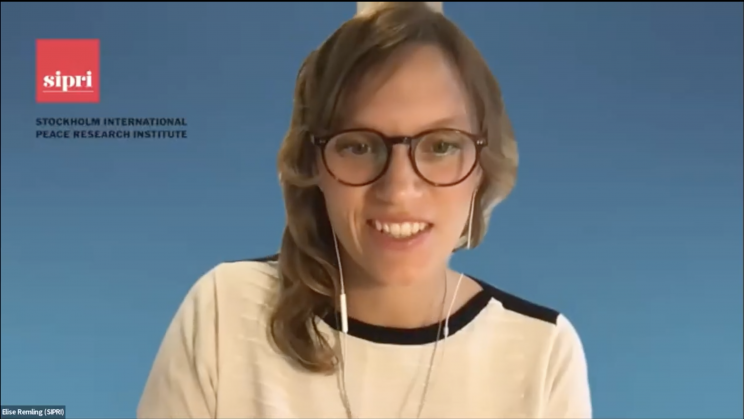
Leading up to the launch of the Environment of Peace report in May 2022, members of the initiative have actively engaged in stakeholder activities since the beginning of the year.
In January, the United Nations Development Programme (UNDP) and SIPRI’s Environment of Peace secretariat organized a joint consultation to provide information about the preparations for two flagship reports: UNDP’s ‘2021–22 Human Development Report’ and the Environment of Peace report. As the scope and key topics of these two reports are closely linked, the joint consultation enabled a discussion on aspects of common or diverging analysis, and emerging findings.
Later in January, the Environment of Peace initiative members consulted practitioners from the German international cooperation agency, Gesellschaft für Internationale Zusammenarbeit (GIZ), on questions explored in the upcoming report. The group discussed whether the research reflected experience from the field about how proposed governance approaches add value when managing emerging risks at project level.
On 2 February Dr Elise Remling, Associate Researcher, Dr Farah Hegazi, Researcher, and Elizabeth Smith, Research Assistant with the SIPRI Climate Change and Risk Programme, participated at the Second International Conference on Environmental Peacebuilding, held virtually. During the session on ‘Exploring the Disaster Risk Reduction (DRR) and Peacebuilding Nexus Roundtable’, Remling introduced the work of the Environment of Peace initiative and outlined the aims of the upcoming report. During the session on ‘Climate Change, Resilience and Peace’, Hegazi and Smith discussed gender and climate-related security risks.
The Environment of Peace secretariat also convened a third consultation, with young experts, at the beginning of 2022. The lead authors of the report discussed not only questions of governance with workshop participants, but also of financing and non-state actors. Further, they explored physical ability and infrastructure and symmetrical impact and responsibility. One of the main messages from the young experts was for practitioners to focus on inclusion and how the struggles and opportunities are diverse and intersectional within all communities.
Read more about the Environment of Peace initiative.